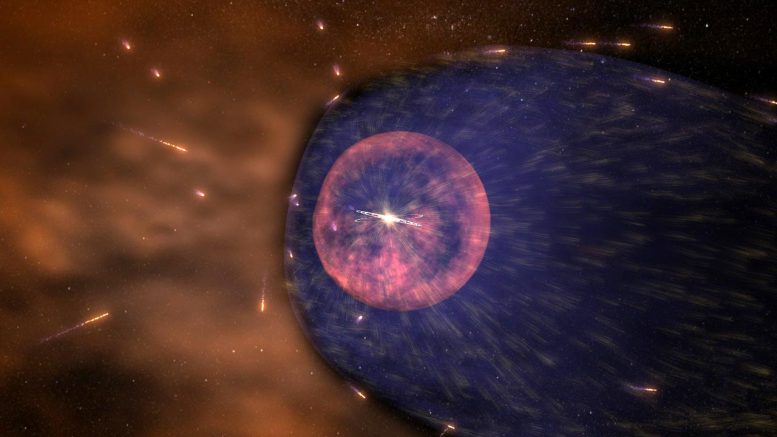
An illustration of the heliosphere being pelted with cosmic rays from outside our solar system. Credit: NASA’s Goddard Space Flight Center/Conceptual Image Lab
Eleven billion miles away – more than four times the distance from us to Pluto – lies the boundary of our solar system’s magnetic bubble, the heliopause. Here the Sun’s magnetic field, stretching through space like an invisible cobweb, fizzles to nothing. Interstellar space begins.
“It’s really the largest boundary of its kind we can study,” said Walt Harris, a space physicist at the University of Arizona in Tucson.
We still know little about what lies beyond this boundary. Fortunately, bits of interstellar space can come to us, passing right through this border and making their way into the solar system.
A new NASA mission will study light from interstellar particles that have drifted into our solar system to learn about the closest reaches of interstellar space. The mission, called the Spatial Heterodyne Interferometric Emission Line Dynamics Spectrometer, or SHIELDS, was successfully launched at 4:30 a.m. EDT April 19, 2021, from the White Sands Missile Range in New Mexico. The NASA Black Brant IX sounding rocket carried the payload to an apogee of 177 miles (285 kilometers) before descending by parachute and landing at White Sands. Preliminary indications show that vehicle systems performed as planned and data was received.
Our entire solar system is adrift in a cluster of clouds, an area cleared by ancient supernova blasts. Astronomers call this region the Local Bubble, an oblong plot of space about 300 light-years long within the spiraling Orion arm of our Milky Way galaxy. It contains hundreds of stars, including our own Sun.
We fare this interstellar sea is our trusty vessel, the heliosphere, a much smaller (though still gigantic) magnetic bubble blown up by the Sun. As we orbit the Sun, the solar system itself, encased in the heliosphere, hurtles through the Local Bubble at about 52,000 miles per hour (23 kilometers per second). Interstellar particles pelt the nose of our heliosphere like rain against a windshield.
Our heliosphere is more like a rubber raft than a wooden sailboat: Its surroundings mold its shape. It compresses at points of pressure, expands where it gives way. Exactly how and where our heliosphere’s lining deforms gives us clues about the nature of the interstellar space outside it. This boundary – and any deformities in it – are what Walt Harris, principal investigator for the SHIELDS mission, is after.
SHIELDS is a telescope that will launch aboard a sounding rocket, a small vehicle that flies to space for a few minutes of observing time before falling back to Earth. Harris’ team launched an earlier iteration of the telescope as part of the HYPE mission in 2014, and after modifying the design, they’re ready to launch again.
SHIELDS will measure light from a special population of hydrogen atoms originally from interstellar space. These atoms are neutral, with a balanced number of protons and electrons. Neutral atoms can cross magnetic field lines, so they seep through the heliopause and into our solar system nearly unfazed – but not completely.
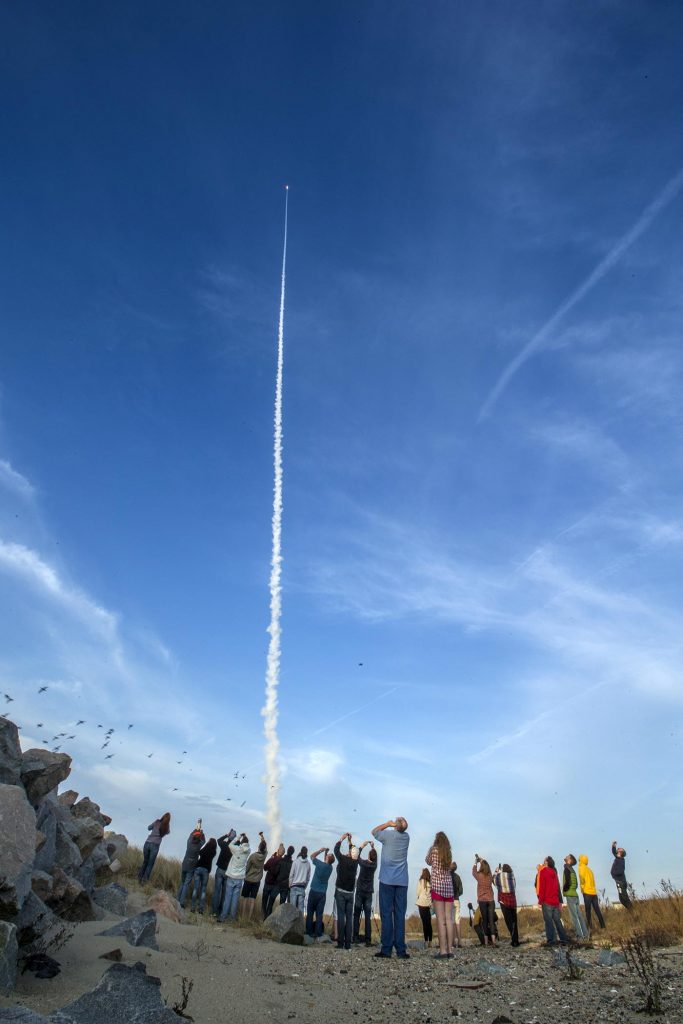
Observers watch a sounding rocket launch from NASA’s Wallops Flight Facility in April 2015. Credit: NASA/Patrick Black
The small effects of this boundary crossing are key to SHIELDS’s technique. Charged particles flow around the heliopause, forming a barrier. Neutral particles from interstellar space must pass through this gauntlet, which alters their paths. SHIELDS was designed to reconstruct the trajectories of the neutral particles to determine where they came from and what they saw along the way.
A few minutes after launch, SHIELDS will reach its peak altitude of about 186 miles (300 kilometers) from the ground, far above the absorbing effect of Earth’s atmosphere. Pointing its telescope towards the nose of the heliosphere, it will detect light from arriving hydrogen atoms. Measuring how that light’s wavelength stretches or contracts reveals the particles’ speed. All told, SHIELDS will produce a map to reconstruct the shape and varying density of matter at the heliopause.
The data, Harris hopes, will help answer tantalizing questions about what interstellar space is like.
For instance, astronomers think the Local Bubble as a whole is about 1/10th as dense as most of the rest of the galaxy’s main disk. But we don’t know the details – for instance, is matter in the Local Bubble distributed evenly, or bunched up in dense pockets surrounded by nothingness?
“There’s a lot of uncertainty about the fine structure of the interstellar medium – our maps are kind of crude,” Harris said. “We know the general outlines of these clouds, but we don’t know what’s happening inside them.”
Astronomers also don’t know much about the galaxy’s magnetic field. But it should leave a mark on our heliosphere that SHIELDS can detect, compressing the heliopause in a specific way based on its strength and orientation.
Finally, learning what our current plot of interstellar space is like could be a helpful guide for the (distant) future. Our solar system is just passing through our current patch of space. In some 50,000 years, we’ll be on our way out of the Local Bubble and on to who knows what.
“We don’t really know what that other cloud is like, and we don’t know what happens when you cross a boundary into that cloud,” Harris said. “There’s a lot of interest in understanding what we’re likely to experience as our solar system makes that transition.”
Not that our solar system hasn’t done it before. Over the last four billion years, Harris explains, Earth has passed through a variety of interstellar environments. It’s just that now we’re around, with the scientific tools to document it.
“We’re just trying to understand our place in the galaxy, and where we’re headed in the future,” Harris said.

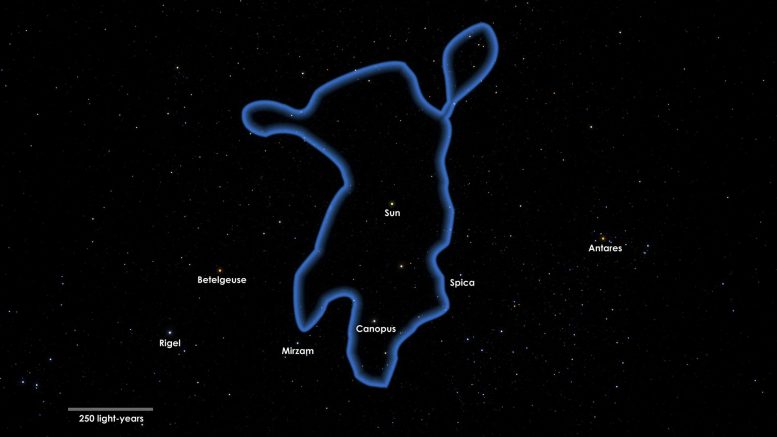

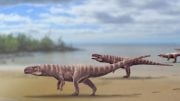
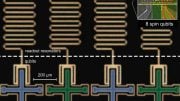
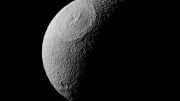
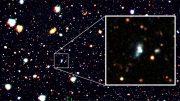
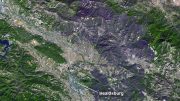
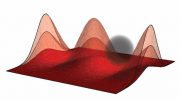
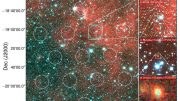
I realize basic research is about the unknown, but this is particularly sparse.
Slow day with me also, imagining the particles pinging off the windshield as they dump their energy. I don’t even have to imagine, there are those paid to sit in a dark room with no windows and remake the mundane stars into majestic creations.
It is essentially a public relations drop but also informing the science community of data in the progress of analysis and- hopefully – publication.
I didn’t understand the last part of the comment – or its relevance – is it alluding to some movie?
Cool way to peek outside the heliosphere, which takes decades for crafts. We need more of these experiments!
“Not that our solar system hasn’t done it before. ”
If it takes about 100,000 year to traverse the bubble, and high density regions are about the same size, we have seen different environments about 10*(4,000/200) ~ 2000 times during our solar system lifetime in a 200 million year long orbit around the Milky Way.
Not that our solar system hasn’t done it before. Over the last four billion years, Harris explains, Earth has passed through a variety of interstellar environments. It’s just that now we’re around, with the scientific tools to document it.
https://www.mcdvoice.ltd/
We can get information from Walt Harris about the recent launch, and He said that “It’s really the largest boundary of its kind we can study.” So, with proper research and Many experiments, we need to know more about our solar system and galaxy.
https://dgcustomerfirst.blog/
McDonald’s is a great brand that always adds a new item to the menu and is regularly updated. To find out if McDonald’s is delivering it’s best, customers should take part in the mcdvoice customer survey.https://www.mcdvoice.to/how-to-do-mcdonalds-survey/
Thanks for sharing insight
https://tellthebelli.website/
Thanks for sharing insight
https://myaarpmedicares.live/
Thank you for the information
The feedback collected through WalgreensListensCon is used by Walgreens to improve its products and services. This means that customers can expect to see changes and improvements based on their feedback. For example, if customers report that a certain product is frequently out of stock, Walgreens may increase its inventory of that product to meet demand.